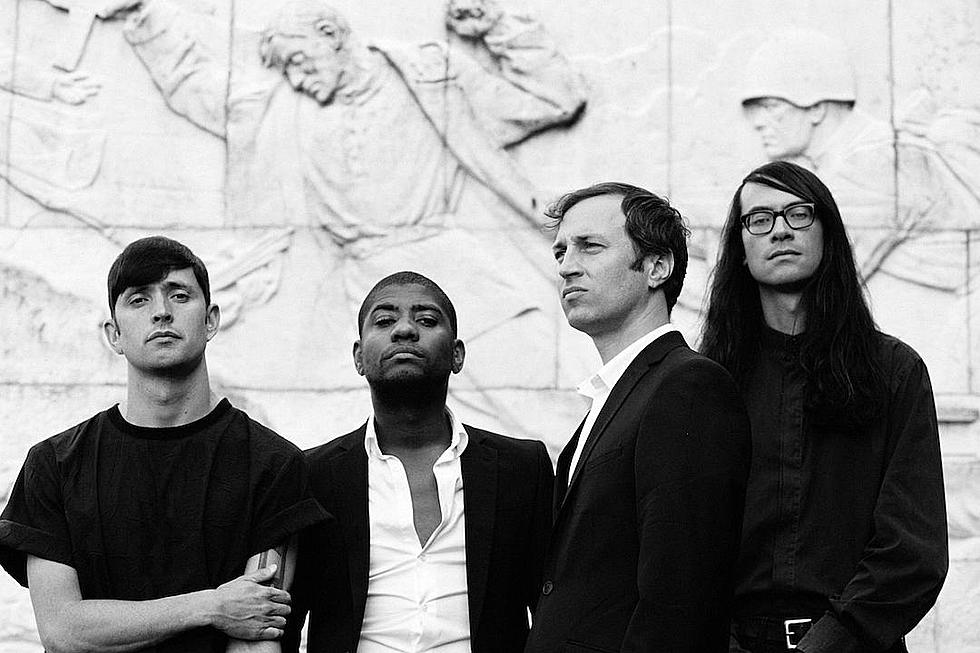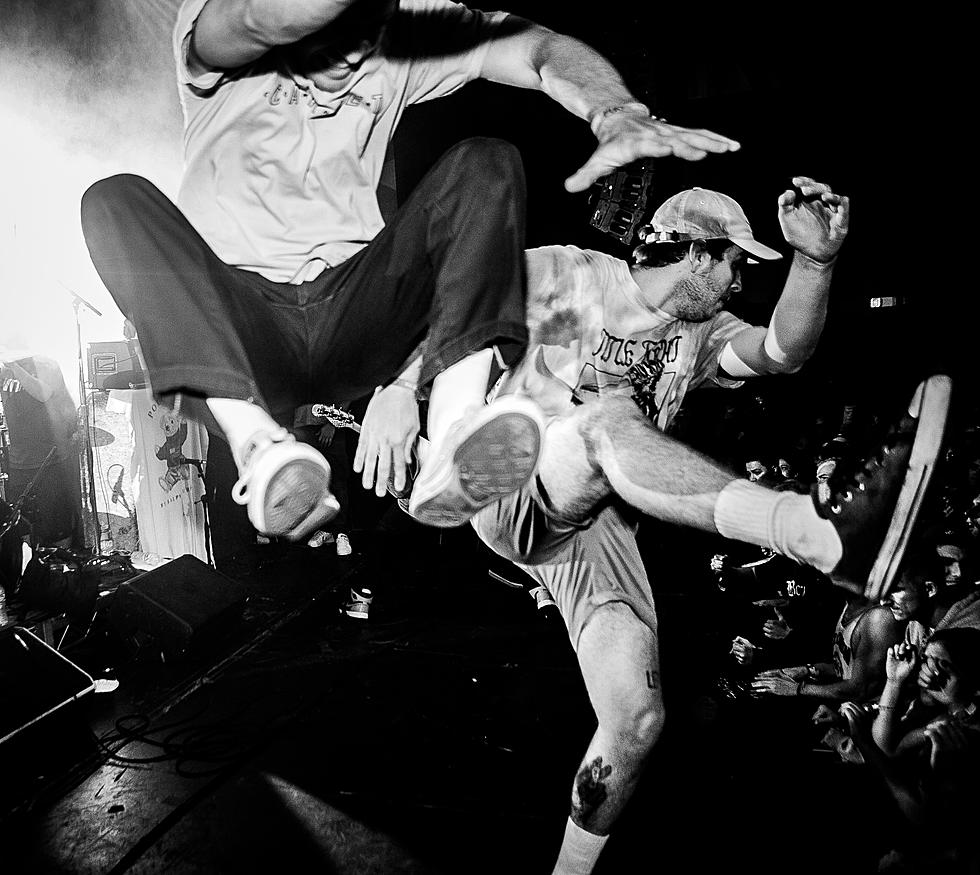
Black Sun Over Iceland: The Sound and Vision of Sigur Ros
After being absent from the touring circuit for three years, Iceland’s Sigur Rós have embarked on a North American tour that took them to New York City for a series of three sold-out shows, first hitting Radio City Music Hall in Manhattan, and then heading out to Flatbush, Brooklyn for two shows at Kings Theatre. On October 7, a stripped-down, three-piece lineup consisting of vocalist / guitarist Jónsi Birgisson, bassist Goggi Hólm and drummer / percussionist Orri Páll Dýrason took the stage. Longtime keyboardist Kjartan Sveinsson departed from the band back in 2013, so this was a bold move. Typically, the band relies heavily on supplemental musicians to realize their layered sound, so the relative austerity of the configuration put a lot of pressure on the trio to fill the space. Prior to the kickoff of the tour, there had been quite a bit of discussion about the band’s approach to performing the older material as a three-piece. Conjecture was made that the arrangements would have to be altered to accommodate the new alignment. With that said, the versions of the songs performed during the band’s dueling sets were more or less faithful to the versions found on the albums.
Another departure from previous tours was the lack of an opening band, which coupled with the two-set format, giving the performance less the feel of a rock show and more the feel of an event. The venue also contributed to the grandiosity of the evening. The Kings Theatre, which opened in the early part of the 20th century, was originally one of the five Loew’s "Wonder Theaters” in New York City, combining movies with live vaudeville performances. The building was designed by Harold W. Rambusch, whose architectural stamp is on many of the lavish theaters in NYC from around that time period. The theater closed in 1977 and sat vacant until last year, when it was reopened after being restored to its former majesty. The vaulted ceilings and palatial interiors provided an impressive backdrop for the kaleidoscope of sound and vision that Sigur Rós unleashed.
Though the music is the prime focus of a live Sigur Rós experience, the visual element was equal in intensity. The house lights dimmed and the stage was enveloped in darkness, throbbing white lights and swirling alabaster clouds materializing on the video screen. Dýrason was the first to emerge, taking his position stage-right behind his drum kit, followed by bandmates Birgisson and Hólm. The journey began, kicking off with a new song titled "Á." The first set of the evening was subdued and introspective, taking a wide sample of their considerable back catalog. Highlights of the set were "Ekki Múkk" off of Valtari and "Dauðalagið," also known as "Untitled 7," from 2002's ( ). One of the most powerful moments was the performance of "Smáskifa," or "Untitled 9," also from ( ), which concluded the first set. Birgisson’s somber falsetto and the band’s swelling electronic drone combined with the dark visuals to create an emotionally heavy atmosphere. Flickering white DMT angels danced across an ebony screen, conjuring up images of a near-death experiences and oblivion. The beauty of the moment was almost suffocating. The visuals dissolved as the music faded and the stage went black. It was a hell of a way to end the set.
The house lights gently brightened and the audience was left with a lot to ponder as they left their seats for the bar or the restrooms. One way to consider the unusual music of Sigur Rós is that it is a reflection of a greater consciousness that exists beyond the human ability to comprehend. The band’s music could be a projection onto a cosmic aggregation that is unknowable to the simple mind of the masses without regarding it through the simple filter of the human mind. While listening to Sigur Rós, there's the impression that there is something more that exists on a higher level above mundane “rock music.” During the set, the visuals presented a black sun, which is often used in alchemy to symbolize the burning away of the husk of everyday existence, leaving behind the essential elements, the core of being. The minimalism of Sigur Rós’ music can be seen as a reduction of music to the essential elements. That, or maybe a big black sun just looked really cool on a huge LED screen.
Not enough can be said about the visuals. They went far beyond the typical projections employed by many artists these days. A high level of technical expertise went into developing their stage set-up, which combined digital video compositions, lighting programs and mechanical elements. At times, it seemed as if the band was performing a play, like there was a narrative being acted out as they changed positions, switched instruments and interacted with the various elements that shared the stage.
After the brief intermission, the house lights dimmed and the band took the stage again, this time posting up behind a translucent screen as the visuals played out in monolithic fashion. They opened the second set by presenting another new song titled "Óveður." They saved the more lively material for the second set; songs like "Sæglópur" from the album Takk ... and "Kveikur" from the album of the same name were featured. The material was sonically heavier, yet the emotional intensity of the previous set was maintained. The show closed with the cathartic "Popplagið," also known as "Untitled 8" from the album Inni, which drove he crowd — who had thus far been seated save for a lone dancer in the front row — to their feet.
More From CLRVYNT









